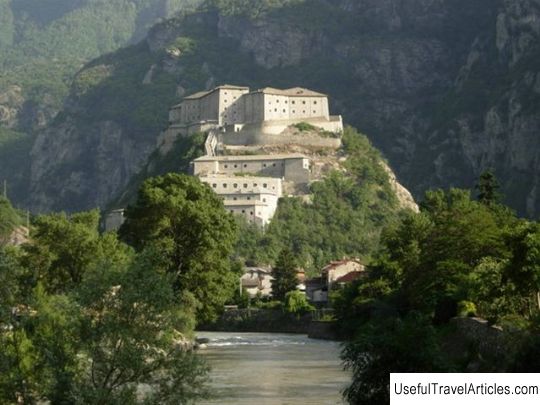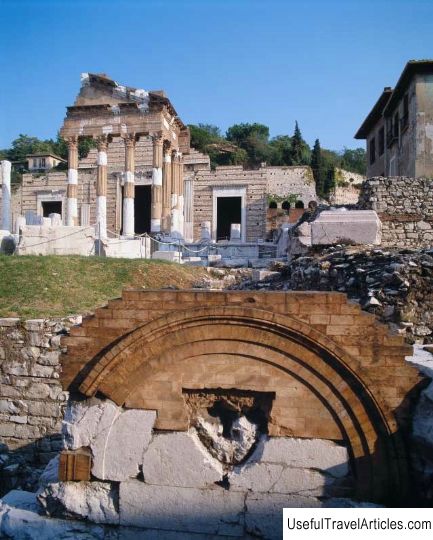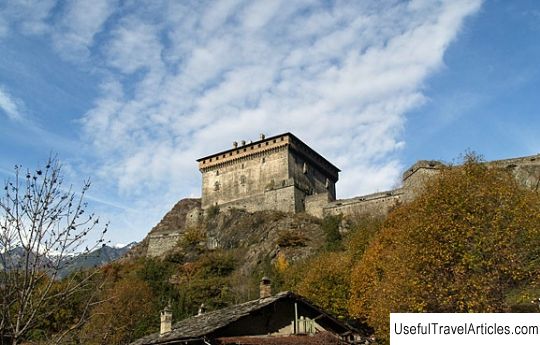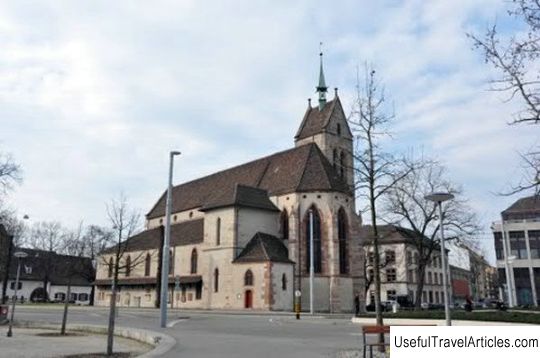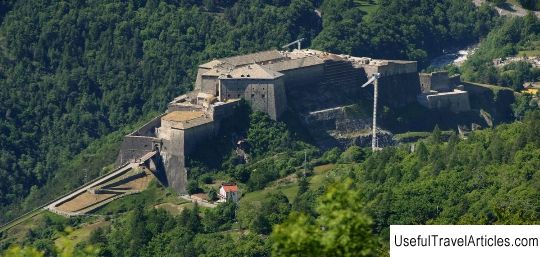Fort Bard (Forte di Bard) description and photos - Italy: Val d'Aosta
Rating: 8,6/10 (240 votes) 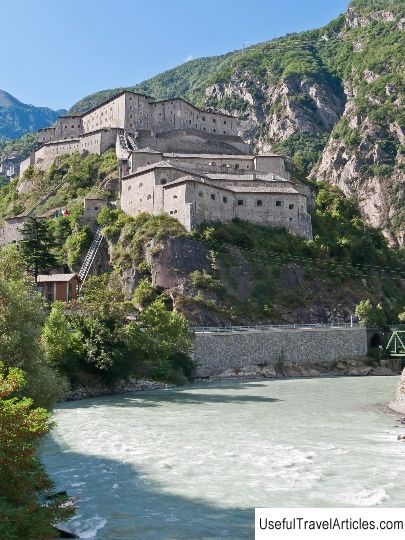
Fort Bard (Forte di Bard) description and photos - Italy: Val d'Aosta. Detailed information about the attraction. Description, photographs and a map showing the nearest significant objects. The title in English is Forte di Bard. Photo and descriptionFort Bard is a fortification complex built in the 19th century by order of the Savoyard dynasty on a rocky promontory above the small town of Bard in the Val d'Aosta region of Italy. After many years of neglect, the fort was completely restored and in 2006 opened its doors to tourists as the Museum of the Alps with exhibition halls and galleries. And in summer, musical and theatrical performances are held on the territory of its main courtyard. Fort Bard, located at the very entrance to the Aosta Valley, stands in a narrow gorge above the Dora Baltea River. For over a thousand years, it has been used to control this historic road between Italy and France. The current fortifications were built by order of Charles Albert of Savoy between 1830 and 1838 on the site of a 10th century castle, which, in turn, was erected on the foundations of an older structure from the 5th century. The castle was owned by the powerful rulers of the Bard until the middle of the 13th century, and then passed into the possession of the Savoy dynasty. It was with the latter that the fort was fortified and significantly modernized. In May 1800, a 40,000-strong French army was stopped by 400 Austro-Piedmontese soldiers at Fort Bard. They held this passage for two weeks, completely frustrating Napoleon's plans for a surprise attack on the Po valley and Turin. Upon learning of the defeat of his troops, Napoleon called the fort "the evil castle of Bard" and personally ordered it to be razed to the ground. Only in 1830, the Sardinian king Charles Albert of Savoy, fearing new attacks from the French, decided to rebuild the fort. The solution to this problem was entrusted to the famous Italian military engineer Francesco Antonio Olivero. As a result of these works, which lasted eight years, a two-level fort was born. Its upper part had traditional walls with loopholes, and the lower one had 50 gun embrasures with separate casemates, designed to protect weapons in the event of an attack. In total, the 238-room fort could accommodate 416 soldiers. On the upper level, there was also a courtyard with armories and barracks. The supply of food and ammunition could be enough for three months of the siege. By the end of the 19th century, Fort Bard lost its military importance and fell into decay, but the Italian army continued to use it as a powder store. After the closure of the fort in 1975, it became the property of the government of the Autonomous Region of Val d'Aosta, and in the 1980s it became a tourist attraction in the valley, despite the fact that many of its structures were in need of renovation. Only in the late 1990s, the fort was closed again, this time for reconstruction, after which it was turned into the Museum of the Alps.       We also recommend reading Church of Graca (Igreja e convento da Graca) description and photos - Portugal: Lisbon Topic: Fort Bard (Forte di Bard) description and photos - Italy: Val d'Aosta. |
